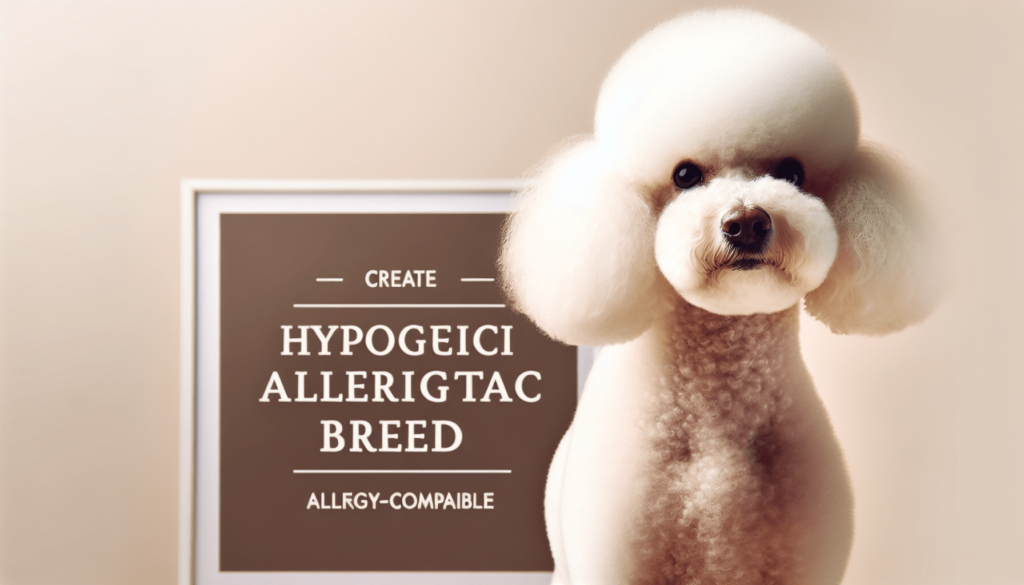Choosing the perfect pet for your home can be a joyful yet challenging task, especially if you or your loved ones suffer from allergies. “Tips for Choosing an Allergy-Friendly Pet” is here to guide you through the process with practical advice to ensure a harmonious and sniffle-free connection with your new furry friend. You’ll discover expert-recommended breeds and useful strategies to alleviate allergy symptoms, making it easier than ever to welcome a pet into your family without compromising your health. Dive in to find out how you can live happily ever after with an allergy-friendly companion. Have you ever dreamed of having a furry companion but worry about allergies? Choosing a pet when you or a family member has allergies can be challenging. Understanding what causes allergies and knowing the kind of pets that might be suitable for your situation is crucial.
Let’s dive into some key tips and considerations that can help you find an allergy-friendly pet. From understanding pet allergies to exploring different breeds and implementing management strategies, we’ve got you covered in your quest to find the perfect pet.
Understanding Pet Allergies
When considering a pet, it’s essential to first understand the root cause of pet allergies. Pet allergies are caused by proteins found in an animal’s skin cells, urine, and saliva.
Common Allergens
Several factors contribute to allergic reactions to pets. Here are the main culprits:
| Allergen Type | Description |
|---|---|
| Dander | Tiny, even microscopic flecks of skin shed by cats, dogs, rodents, birds, and other animals with fur or feathers. |
| Saliva | The reason is because animals lick themselves, spreading their saliva to their fur, which then becomes dander. |
| Urine and Feces | Proteins in the animal’s waste can become airborne when they dry and can be inhaled. |
Symptoms of Pet Allergies
Pet allergies often manifest in different ways. Being able to recognize these symptoms can help you decide if an allergy-friendly pet is needed.
- Sneezing
- Runny or stuffy nose
- Itchy, red, or watery eyes
- Coughing, wheezing, or shortness of breath
- Skin rash or hives
Choosing the Right Pet
Selecting an allergy-friendly pet involves looking beyond just the animal’s cuteness. Here are the steps and tips to guide you in making the best choice:
Research Hypoallergenic Breeds
Certain breeds are known to produce fewer allergens or shed less, making them more suitable for people with allergies. Consider these factors when choosing a pet:
Hypoallergenic Dogs
| Breed Name | Description |
|---|---|
| Poodle | Known for its curly, hypoallergenic coat that sheds minimally. |
| Bichon Frise | The coat produces fewer dander particles. |
| Portuguese Water Dog | Has a single-layer coat that sheds less and produces fewer allergens. |
Hypoallergenic Cats
| Breed Name | Description |
|---|---|
| Sphynx | Hairless breed with little to no shedding. |
| Russian Blue | Coat emits fewer allergenic proteins. |
| Balinese | Produces fewer of the common allergenic protein Fel d 1. |
Consider Smaller Pets
Small pets like rodents and reptiles can also be good choices for allergy sufferers. These animals usually don’t shed much dander. Here are a few options:
| Pet Type | Description |
|---|---|
| Hamsters and Gerbils | Small and easier to manage. |
| Fish | No fur, dander, or saliva to worry about, although tanks require maintenance. |
| Reptiles (such as lizards and snakes) | They don’t have fur or dander and are less likely to cause allergic reactions. |
Evaluating Exposure Levels
Before making a decision, consider how much interaction you’ll have with the pet. Pets that require less physical handling might be better for more sensitive individuals.
- Interactive Pets: Dogs and cats often require more direct contact.
- Less Interactive Pets: Fish, reptiles, and certain small rodents need less handling.
Visit Pet Allergy Clinics
Many clinics offer allergy testing, which can determine what specific animal proteins you or a family member might be allergic to. Such information can help tailor your choices more accurately.

Management Strategies for Pet Allergies
Once you’ve chosen an allergy-friendly pet, it’s essential to put practices into place that reduce allergen exposure in your home.
Regular Grooming and Bathing
For pets with fur, regular baths and grooming can reduce the amount of dander and allergens they spread. Here’s what you can do:
- Brush Regularly: At least a few times a week to remove loose hairs.
- Frequent Baths: Every couple of weeks for dogs and following a vet’s advice for cats.
Maintain Clean Living Spaces
Keeping your living environment clean can significantly reduce allergen levels.
- Vacuum Frequently: Use vacuums with HEPA filters to trap dander and allergens.
- Clean Pet Areas: Regularly wash bedding, litter boxes, and pet toys.
- Dust and Wipe Surfaces: Ensure that surfaces are free of dust and hair.
Use Air Purifiers
Installing air purifiers with HEPA filters can help capture airborne allergens, making the air in your home cleaner and safer to breathe. Place them in common areas and your bedroom for the best results.
Designate Pet-Free Zones
Creating specific areas in your home where your pet is not allowed, such as bedrooms, can significantly improve sleep quality and reduce allergy symptoms.
Consider Allergy Medications
Sometimes, despite all precautions, you might still experience symptoms. Over-the-counter or prescription allergy medications can help control your allergic reactions.
Consult with a healthcare provider to find the right medications for your needs.
Building a Safe and Comfortable Environment
Creating an optimal environment for both you and your allergy-friendly pet is crucial for a happy and healthy relationship.
Choosing the Right Bedding
For pets with fur or feathers, selecting hypoallergenic bedding material can make a big difference.
- Unscented Options: Prefer unscented over fragranced products to avoid triggering allergies.
- Washable: Bedding that can be frequently washed in hot water to kill allergens.
Selecting Proper Toys
Opt for toys that minimize allergen accumulation.
- Easy to Clean: Toys made of materials that can be washed or disinfected.
- Non-Porous: Avoid fabric toys that can trap allergens.
Feeding and Nutrition
A well-balanced diet can positively influence your pet’s skin health and fur quality, reducing dander production.
- High-Quality Food: Look for pet food that supports skin health.
- Supplements: Omega fatty acids can help improve coat condition and reduce shedding.

Building a Routine
An established routine ensures that allergen management becomes part of your daily life without feeling overwhelming.
Daily Care Routine
Implementing a daily care routine can help you stay on top of allergen control.
- Morning and Evening Grooming: A quick brush in the morning and evening can help manage shed fur.
- Regular Cleaning: Quick daily tasks like wiping surfaces and vacuuming can prevent allergen build-up.
Weekly Deep Cleaning
Set aside a day each week for more thorough cleaning tasks.
- Wash Pet Bedding: Clean all pet bedding in hot water.
- Deep Vacuum and Dusting: Use a vacuum with a HEPA filter and dust with microfiber cloths.
- Filter Maintenance: Check and replace filters in air purifiers and HVAC systems regularly.
Anxiety Management for Pets
Some hypoallergenic pets, particularly those requiring special grooming or healthcare routines, might experience anxiety. Manage this carefully to ensure they are comfortable while you keep allergies in check.
Comfort Zones
Create safe spaces in your home where your pet can feel secure and relaxed.
- Pet Beds and Blankets: Use in areas pets frequently relax.
- Quiet Areas: Safe, quiet spaces away from noise and high traffic.
Calmness Techniques
Use techniques to keep your pet calm during grooming and bathing.
- Positive Reinforcement: Reward calm behavior with treats or affection.
- Calming Devices: Items like calming collars or diffusers release soothing pheromones.
Conclusion
Choosing an allergy-friendly pet involves careful consideration and planning, but it’s definitely within your reach. By understanding the causes of pet allergies, researching hypoallergenic breeds, and implementing management strategies, you can bring a loving companion into your home without sacrificing your health.
Remember, creating a balance between enjoying your pet and managing allergens is key to a happy coexistence. With these tips, you can navigate the journey more smoothly and find the perfect pet that complements your lifestyle and keeps those sneezes at bay! Happy pet hunting!
